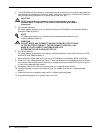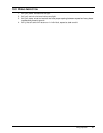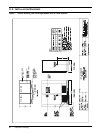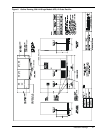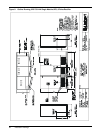
Wiring Connections 21
9.0 WIRING CONNECTIONS
Refer to the drawings in this manual and any other drawings provided by Liebert for this installa-
tion. Make all of the following connections:
1. AC power cables from input power source circuit breaker (RIB) to UPS Module Input. Observe
phase rotation.
2. AC power cables from bypass power source circuit breaker (BIB) to UPS Module Bypass
input. Observe phase rotation.
3. AC power cables from UPS Module Output to critical load. Observe phase rotation.
!
WARNING
VERIFY THAT ALL INCOMING HIGH AND LOW VOLTAGE
POWER CIRCUITS ARE DE-ENERGIZED AND LOCKED OUT
BEFORE INSTALLING CABLES OR MAKING ELECTRICAL
CONNECTIONS.
ALL POWER CONNECTIONS MUST BE COMPLETED BY A
LICENSED ELECTRICIAN EXPERIENCED IN WIRING UPS
EQUIPMENT, AND IN ACCORDANCE WITH ALL APPLICABLE
NATIONAL AND LOCAL ELECTRICAL CODES.
IMPROPER WIRING MAY CAUSE DAMAGE TO THE UPS OR
INJURY TO PERSONNEL.
!
CAUTION
All shielded cables, non-shielded cables, non-shielded control
wires, non-shielded battery breaker control wires, and non-
shielded remote control wires must be housed in individual,
separate, steel conduits. Placing multiple cables in the same
conduit with other control or power wiring may cause system
failure.
!
CAUTION
If there are line-to-neutral loads connected to the UPS output, the
input source must be wye connected and have three phases plus
neutral plus ground. If the specified input is not available, an
isolation transformer is required.
NOTE
If your installation includes a Maintenance Bypass Panelboard or a
Transformer Cabinet, some (or all) power cables will be terminated in these
cabinet(s). Make sure all required wiring between UPS module and the
optional cabinet(s) is completed. Observe phase rotation.












